Monthly Archives: December 2019
 In 1995, during the Christmas season, Lena Paahlsson was baking Christmas cookies with her daughters at their farm in northern Sweden. As was her habit while baking, Lena took off her wedding ring, and placed it on the counter. While they were cleaning up after baking, Lena could not find her ring. It was a devastating end to the year. Lena and her family hunted for the ring everywhere, even pulling up floorboards…hoping against hope, but to no avail. The ring had vanished…lost forever, or so they thought.
In 1995, during the Christmas season, Lena Paahlsson was baking Christmas cookies with her daughters at their farm in northern Sweden. As was her habit while baking, Lena took off her wedding ring, and placed it on the counter. While they were cleaning up after baking, Lena could not find her ring. It was a devastating end to the year. Lena and her family hunted for the ring everywhere, even pulling up floorboards…hoping against hope, but to no avail. The ring had vanished…lost forever, or so they thought.
Then, one day in October 2011, while she was pulling the last of the carrots from her garden, Lena was stunned to see her wedding ring wrapped neatly around the top of the carrot. Lena had given up hope of ever finding the ring she cherished. The family speculates that the ring must have fallen into the sink, and been mixed with the potato peels that were later composted or fed to the sheep, because the soil in the garden is made from composted vegetables and sheep dung. They have no idea why it took 16 years for the ring to work its way to the surface again, but they are sure that if the ring had not had a tiny carrot seed land in its middle, it would have still be 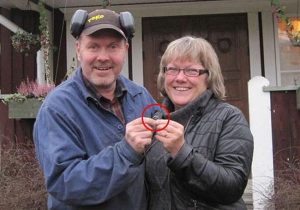 hiding there in the rich dirt of the garden. In the end, it was a Carat Carrot that returned her ring to her.
hiding there in the rich dirt of the garden. In the end, it was a Carat Carrot that returned her ring to her.
Unfortunately, after all these years, the ring no longer fits Lena. It will need to be sized before she can wear it again. They fact certainly didn’t dim the joy and happiness the family felt at the return of the precious ring. Lena says, “I had given up hope. Now that I have found the ring again I want to be able to use it.” I’m sure that the Carat Carrot made the meal it was used in just that much better. Imagine…the carrot had a very special job to do, before it went on to do what it was destined to do in the first place.
 The life of a spy is a dangerous one. Getting caught spying is often punishable by death, so the key to being a successful…and later old spy, is not to get killed, and therefore not to get caught. The spies had a number of way so fool the Nazis. One of the ways was to research the proper clothing for the area and the times, and make sure that the clothing of the spy didn’t stand out as being foreign or outdated. To miscalculated that aspect of the spy, could mean certain death.
The life of a spy is a dangerous one. Getting caught spying is often punishable by death, so the key to being a successful…and later old spy, is not to get killed, and therefore not to get caught. The spies had a number of way so fool the Nazis. One of the ways was to research the proper clothing for the area and the times, and make sure that the clothing of the spy didn’t stand out as being foreign or outdated. To miscalculated that aspect of the spy, could mean certain death.
Clothing wasn’t always the concern. When a spy is being followed, footprints can be very telling. One of the ways that the spies fooled the Nazis was the spy shoes they wore. The shoes were very functional as a way to disguise what was going on, but the looked hilarious. The idea of the shoes was to make the person following the spy think that 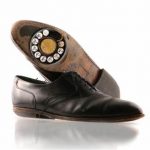 the spy was going the opposite direction from that which the spy was really going. Basically, the shoe was put on the sole backwards. That way, the person following the spy, would think he was walking toward the spy, when he was actually walking away from him. The technique gave the spy precious time to get far away from the enemy who was tracking him. The only problem for the spy was the shape of the shoe. It seems to me that the shape of the shoe would feel very odd to the spy. Nevertheless, the shoe was necessary, and so the spy got used to it. I suppose the feeling was similar to a child putting their shoes on the wrong feet. It is thought that the shoes might have first been used by Moonshiners during the prohibition period.
the spy was going the opposite direction from that which the spy was really going. Basically, the shoe was put on the sole backwards. That way, the person following the spy, would think he was walking toward the spy, when he was actually walking away from him. The technique gave the spy precious time to get far away from the enemy who was tracking him. The only problem for the spy was the shape of the shoe. It seems to me that the shape of the shoe would feel very odd to the spy. Nevertheless, the shoe was necessary, and so the spy got used to it. I suppose the feeling was similar to a child putting their shoes on the wrong feet. It is thought that the shoes might have first been used by Moonshiners during the prohibition period.
Our more modern day thought concerning spy shoes and other equipment is probably far more advanced. The shoes might have contained a knife in the heel or even a shoe phone, like Maxwell Smart…on the show “Get 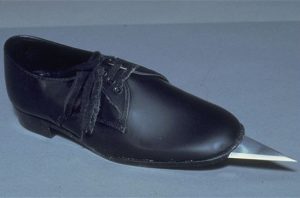 Smart.” Of course, much of that is fiction, and I don’t know if real modern day spies even use special shoes or any other special spy tools, for that matter. The Backward Spy Shoes were a very simple tool, but it would seem that they were highly effective during World War II. The only problem I see with a shoe that takes a tracker back to the starting point of the spy who is being pursued is that it would make it impossible to return to the point of origin for fear of being tracked there. Of course if the spy walked to a public place, like a train station, and then switched shoes, they could easily get lost in the crowd, never to be found. Either way, the shoes were a clever way to outsmart the enemy.
Smart.” Of course, much of that is fiction, and I don’t know if real modern day spies even use special shoes or any other special spy tools, for that matter. The Backward Spy Shoes were a very simple tool, but it would seem that they were highly effective during World War II. The only problem I see with a shoe that takes a tracker back to the starting point of the spy who is being pursued is that it would make it impossible to return to the point of origin for fear of being tracked there. Of course if the spy walked to a public place, like a train station, and then switched shoes, they could easily get lost in the crowd, never to be found. Either way, the shoes were a clever way to outsmart the enemy.
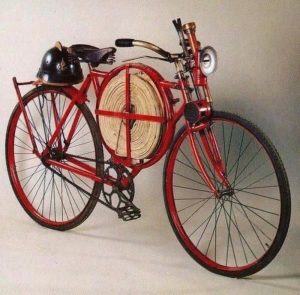 At the turn of the century, some firefighters arrived at the fire in a slightly different way than the normal truck or wagon. I don’t suppose that this was a common practice, because in most cases, it would be impractical, but for the firefighters in the workshops of Birmingham Small Arms in Great Britain, it was the normal mode of transportation. Birmingham Small Arms built a special bicycle for their firefighters. The bicycle would be an interesting way to ride to and from work, as well, but this one was to be used for a very special purpose. I would think that there might have been several businesses like Birmingham Small Arms, that utilized this type of firefighting “truck.”
At the turn of the century, some firefighters arrived at the fire in a slightly different way than the normal truck or wagon. I don’t suppose that this was a common practice, because in most cases, it would be impractical, but for the firefighters in the workshops of Birmingham Small Arms in Great Britain, it was the normal mode of transportation. Birmingham Small Arms built a special bicycle for their firefighters. The bicycle would be an interesting way to ride to and from work, as well, but this one was to be used for a very special purpose. I would think that there might have been several businesses like Birmingham Small Arms, that utilized this type of firefighting “truck.”
The bicycle was equipped with a fire hose that could be hooked up to a hydrant, and a spindle to hold it. It also held a crowbar to get into buildings, and a flashlight so the firefighter could see to get around in the dark. The bicycle wouldn’t be practical in a big city, but for a small town, or a company yard, it was perfect. I can see where it 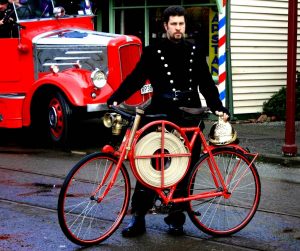 could be problematic if they tried to use the bicycle in the wintertime, but the other season would be ok for the most part.
could be problematic if they tried to use the bicycle in the wintertime, but the other season would be ok for the most part.
Of course, I can see some ways in which the fire bike would not really be the best option. Fire hose has a lot of pressure, and so, would it knock the bicycle over. Also, I’m not sure how wide the firehose spindle is, but it seems to me that it could make peddling difficult. I’m not sure how heavy of how well balanced the bicycle is, but it seems like it might be top heavy. Given the possible problems with the fire bike, I think it might be best to stick with a fire truck. The modern day firetrucks are able to carry lots of other equipment that is necessary to fighting fires. They can also go most places, in all kinds of weather…just a better idea, in the long run.
 In a time of national turmoil, it has become trendy to disrespect the flag of the United States. It is all done supposedly to protest things like racism or police brutality, but in reality, the flag, and our allegiance to it and our nation have nothing to do with those causes. I agree with the rights of citizens to carry on a peaceful protest, but I don’t agree with this way of doing it…or burning our flag. Some people will not like this view of things, but I wonder why the flag is chosen as the avenue for these protests. These protesters don’t want to leave this nation. They know it would be crazy to do so, because they would never have the same kinds of freedoms they have here, especially the right to protest. That is fine, but they use flag is a means to grab attention, and that is where I disagree. A protest can be held, while still remaining in solidarity as a nation. People will listen when the nation is not disrespected.
In a time of national turmoil, it has become trendy to disrespect the flag of the United States. It is all done supposedly to protest things like racism or police brutality, but in reality, the flag, and our allegiance to it and our nation have nothing to do with those causes. I agree with the rights of citizens to carry on a peaceful protest, but I don’t agree with this way of doing it…or burning our flag. Some people will not like this view of things, but I wonder why the flag is chosen as the avenue for these protests. These protesters don’t want to leave this nation. They know it would be crazy to do so, because they would never have the same kinds of freedoms they have here, especially the right to protest. That is fine, but they use flag is a means to grab attention, and that is where I disagree. A protest can be held, while still remaining in solidarity as a nation. People will listen when the nation is not disrespected.
On December 28, 1945, the US Congress officially recognized the Pledge of Allegiance to the Flag. At that time they also gave instructions as to how the pledge should be performed. They stated that The Pledge of Allegiance to the Flag should be rendered by standing at attention facing the flag with the right hand over the  heart. The statement of the pledge was specific, “I pledge allegiance to the Flag of the United States of America, and to the Republic for which it stands, one Nation under God, indivisible, with liberty and justice for all.” The pledge is a statement of a people who are proud to be Americans. I know that these days, there are those who are not “proud to be Americans,” and to that I say, “Then leave!!” Our citizens are not prisoners here. They are free to travel…free to leave, so if you don’t love this nation, then go.
heart. The statement of the pledge was specific, “I pledge allegiance to the Flag of the United States of America, and to the Republic for which it stands, one Nation under God, indivisible, with liberty and justice for all.” The pledge is a statement of a people who are proud to be Americans. I know that these days, there are those who are not “proud to be Americans,” and to that I say, “Then leave!!” Our citizens are not prisoners here. They are free to travel…free to leave, so if you don’t love this nation, then go.
I realize that while the people using our flag and our pledge don’t want to leave, they just want to disrespect it. Oddly, many of them would disagree with that statement, but to use the flag and the pledge as part of a protest is, in my opinion, disrespectful to our nation. There are many other ways to protest, and if these people want the support of the nation for their protest, they need to understand that disrespecting the nation that the people love, will not get the backing of the masses. The people are so angry about the disrespecting of the flag, pledge, and nation, that they don’t even listen to the “meat” of the protest. The avenue they have chosen  completely defeats the purpose of the protest.
completely defeats the purpose of the protest.
We, the people of the Unites States of America must turn back to allegiance to this nation that was created “under God” and find another avenue in which to protest the things about it, of which we disapprove. Change can happen, but we must put the masses on our side to affect change, not turn them against us and the things we protest. On this day, the 74th anniversary of the day when we first recognized our Pledge of Allegiance, I ask those who would protest, to turn from using the flag and pledge as an avenue to a protest, and use methods of honor and not dishonor.
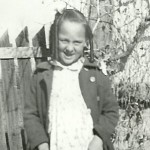 My husband, Bob’s aunt, Esther Hein is the oldest child of her parents, Walt and Vina Hein. She was also the middle child of her mother, who had two children from another marriage. Because of the age difference the children, the older children, Marion and Walt were both married while Esther was just a little girl, so she grew up being the oldest child for the most part. Besides her two half-siblings, Esther had two brothers, Edward and Bernard Hein.
My husband, Bob’s aunt, Esther Hein is the oldest child of her parents, Walt and Vina Hein. She was also the middle child of her mother, who had two children from another marriage. Because of the age difference the children, the older children, Marion and Walt were both married while Esther was just a little girl, so she grew up being the oldest child for the most part. Besides her two half-siblings, Esther had two brothers, Edward and Bernard Hein.
The family lived outside of Forsyth, Montana on a ranch, and with the winters in Montana being what they often are, getting her to school wasn’t always easy, so during the winter months, Esther often lived with her brother Walt and his wife Joann, so she could attend school regularly. Those were special days for Esther, who became very close friends with Walt and Joann, as well as little sister. Of course, as with any child, Esther could be trying, to which Joann would exclaim, “Don’t Esther!” A situation that remained with Joann, even when Alzheimer’s Disease stole many of her memories. The three of them would remain close for the rest of their lives. Though they lived far away from each other for their entire adult lives, they talked on the phone often, and visited as often as they could.
Esther is an artist, and many of her pieces of artwork adorned the homes of her family. She is also a good seamstress, and made curtains for Walt and Joann’s bathroom, which they loved very much. She especially liked to paint on unusual objects, like sawblades. She would create beautiful landscapes on both straight sawblades, as well as round sawblades. The effect was amazing. The way that something so mechanical could also take on a rustic look was amazing. Her artistic ability was something that made her brother, Walt very proud. He spoke of it often, and was always quick to point out her paintings to people who visited the house. He proudly told them that the artist was his little sister. Today is Esther’s birthday. Happy birthday Esther!! Have a great day!! We love you!!
 Imagine, if you can these days, a world without photography. Cameras are almost always at our fingertips now. We don’t need to carry a camera with us, we have our phones, and we are able to take all the pictures we want. We can document everything from the birth of our children, to a pretty sunset in the back yard. We document our smiles, frowns, and totally shocked looks. In so many ways, personal photography has changed our lives, but one way in particular is in documenting history. Most people don’t think our what they are doing as documenting history exactly, but it certainly can be. People have captured plane crashes, rocket launches, car accidents, forest fires, volcano eruptions, and earthquakes…just to name
Imagine, if you can these days, a world without photography. Cameras are almost always at our fingertips now. We don’t need to carry a camera with us, we have our phones, and we are able to take all the pictures we want. We can document everything from the birth of our children, to a pretty sunset in the back yard. We document our smiles, frowns, and totally shocked looks. In so many ways, personal photography has changed our lives, but one way in particular is in documenting history. Most people don’t think our what they are doing as documenting history exactly, but it certainly can be. People have captured plane crashes, rocket launches, car accidents, forest fires, volcano eruptions, and earthquakes…just to name  a few. Those things might not be history today, but in a couple of years, they are, and in many cases, one person had the only picture of the historic event.
a few. Those things might not be history today, but in a couple of years, they are, and in many cases, one person had the only picture of the historic event.
Would history be documented without photography? Of course, but it would happen by word of mouth, and later the written word…newspapers, books and such. The problem with that is that those accounts can only tell the part of history that someone saw or was a part of. But, what if they missed something? Humans so often miss the small details, but a camera or video camera, doesn’t miss as much. Once a picture is taken, an event is documented…and every small detail can be re-examined at will. Pictures have made the difference between knowing the cause and never knowing the cause. Pictures have proven fault 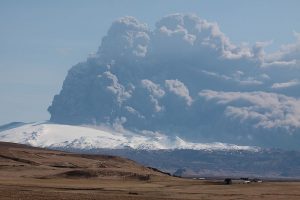 without a doubt. They have been the difference between an innocent person being falsely accused, and getting to the truth.
without a doubt. They have been the difference between an innocent person being falsely accused, and getting to the truth.
These days, with a camera built into our phone, we can, and do, document many events of our lives. And we document history…some of it amazing, and some of it devastating. It’s all part of the ability to capture things in real time. You have to take the bad with the good, because unfortunately, not all of history is beautiful. Some of it is completely ugly, but it still needs to be documented. Pictures have become necessary, because without photography, much of the full documentation of history would be lost.
 Christmas…a time with family, presents under the Christmas tree, eating far too much great food…is that all there is too it? No, of course not!! In fact, those things have very little to do with Christmas. That’s because Jesus is the reason for the season. The family time, food, and gifts are fine, but we should never forget the gift God gave us on that wonderful day so long ago. The people of Earth had made such a mess of things here. No, I’m not talking about climate change. I’m talking about sin. God could have walked away, and started the whole thing over, but His heart was with his children. He wanted us all to be with Him in Heaven, when our time here on Earth is over. He knew that we needed at Saviour, and so His son agreed to leave Heaven and come to Earth…as a helpless baby.
Christmas…a time with family, presents under the Christmas tree, eating far too much great food…is that all there is too it? No, of course not!! In fact, those things have very little to do with Christmas. That’s because Jesus is the reason for the season. The family time, food, and gifts are fine, but we should never forget the gift God gave us on that wonderful day so long ago. The people of Earth had made such a mess of things here. No, I’m not talking about climate change. I’m talking about sin. God could have walked away, and started the whole thing over, but His heart was with his children. He wanted us all to be with Him in Heaven, when our time here on Earth is over. He knew that we needed at Saviour, and so His son agreed to leave Heaven and come to Earth…as a helpless baby.
Adam had sinned and ruined things here, and it would take a man without sin…for his whole life, to change the whole outcome of Adam’s mistake. Jesus had to be born as a human baby, because that was the only way to operate in the Earth realm. Then, He had to live a sinless life. It didn’t matter what human parts of him were trying to tell him to do, he couldn’t get angry, be disrespectful, lie, or any other sin. If you and I were to be  saved by Jesus’ death on the cross, He had to be sinless. It was the only way for his death to make a difference. It would be a horribly cruel death, and Jesus knew it, but He did what He had to do…and it all started when He came to Earth as a baby to become our Saviour. Nothing beats that.
saved by Jesus’ death on the cross, He had to be sinless. It was the only way for his death to make a difference. It would be a horribly cruel death, and Jesus knew it, but He did what He had to do…and it all started when He came to Earth as a baby to become our Saviour. Nothing beats that.
Yes, the family gatherings are great, and the gifts are nice, but the greatest gift that was ever given was the gift of a perfect life that became the sacrifice to restore righteousness to those who could not live a perfect life. It was an amazing gift, and one we cannot ever thanks Him for enough. Happy birthday dear Jesus. Thanks you for your sacrifice, and Merry Christmas everyone. Have a great holiday, thank you for all you did for us.
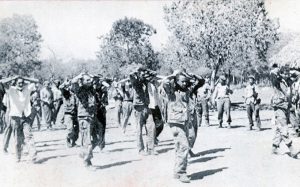 We have all heard the song “Home for Christmas.” It’s about a young woman falls in love and develops a long-distance relationship with a soldier on active duty, The soldier sings the song, knowing he probably won’t be home for Christmas that year. It was a bittersweet, sentimental story, that hopefully ended well for the couple.
We have all heard the song “Home for Christmas.” It’s about a young woman falls in love and develops a long-distance relationship with a soldier on active duty, The soldier sings the song, knowing he probably won’t be home for Christmas that year. It was a bittersweet, sentimental story, that hopefully ended well for the couple.
In 1962, however, the song could have taken a totally different meaning. The Bay of Pigs Invasion…failed attempt by US-sponsored Cuban exiles to reverse Fidel Castro’s Cuban Revolution, beginning with a military invasion of northern Cuba. The operation lasted just three days, from April 17 to April 20, 1961. About 1,202 members of the invading Brigade 2506 were captured, of whom nine died from asphyxiation during transfer to Havana in a closed truck. For the families of these men, as for any family of a POW, it was devastating. To make matters worse, the Cuban government wanted $53 million in food and medical supplies, to be donated by companies all over the United States, as a condition for their release. The US government agreed to the terms, in the hope of getting the men released by Christmas.
The deal made, with only one glitch, when Castro changed the deal…demanding an additional $2.9 million in cash, just as the prisoners were preparing to leave on December 23rd. The money was raised in a frantic day of fundraising on 24 December by the president’s brother, Attorney General Robert F. Kennedy, and General Lucius D Clay, an advisor to the Cuban Families Committee of prisoners’ relatives. The largest donation was $1m, given by a donor who wished to remain anonymous but was not, the government said, part of the Kennedy family. Finally on December 24th, The airlift of the prisoners began, when the first 107 men boarded a DC6 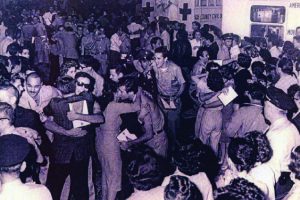 airliner supplied by Pan American World Airways at a military airbase near Havana. After just four flights, however, the operation was suspended for the night, to the consternation of the thousands of anxious relatives of the prisoners, keeping vigil in Florida for their return. Flights resumed early this morning, and by the end of the day most of the 1,113 prisoners had been safely returned. Cuban exiles in the United States arranged the return of 60 wounded prisoners soon afterwards for $2.5 million. The remainder were held in captivity until October 1986, when they were released. Ramon Conte Hernandez was the last one released, and the ordeal was finally over. As the song goes, they would finally be “Home For Christmas.”
airliner supplied by Pan American World Airways at a military airbase near Havana. After just four flights, however, the operation was suspended for the night, to the consternation of the thousands of anxious relatives of the prisoners, keeping vigil in Florida for their return. Flights resumed early this morning, and by the end of the day most of the 1,113 prisoners had been safely returned. Cuban exiles in the United States arranged the return of 60 wounded prisoners soon afterwards for $2.5 million. The remainder were held in captivity until October 1986, when they were released. Ramon Conte Hernandez was the last one released, and the ordeal was finally over. As the song goes, they would finally be “Home For Christmas.”
 The desert is known to be a wide expanse of sand, and not much else of any value, but that doesn’t mean that there is no vegetation there. Usually you will find shrubs and patches of weeds here and there as well as the occasional cactus. There aren’t usually many trees, but there usually are a few. L’Arbre du Ténéré, known in English as the Tree of Ténéré, was a solitary Acacia tree that was once considered the most isolated tree on Earth. In fact, it was the only tree for over 250 miles.
The desert is known to be a wide expanse of sand, and not much else of any value, but that doesn’t mean that there is no vegetation there. Usually you will find shrubs and patches of weeds here and there as well as the occasional cactus. There aren’t usually many trees, but there usually are a few. L’Arbre du Ténéré, known in English as the Tree of Ténéré, was a solitary Acacia tree that was once considered the most isolated tree on Earth. In fact, it was the only tree for over 250 miles.
The tree was located in the Sahara Desert. At one time the tree had been part of a lush and populated forest, but as time went on, the trees began to die out, until L’Arbre du Ténéré stood alone in a barren desert as an isolated landmark for caravan routes through the Ténéré region of the Sahara in northeast Niger for hundreds of years. Anyone who traveled the desert knew about the tree. That tree and the Arbre Perdu or ‘Lost Tree’ to the north are so well known, that they are the only trees to be shown on a map at a scale of 1:4,000,000.
Against all odds, the tree survived hundreds of years of desertification. It was one tough tree. Then one day in 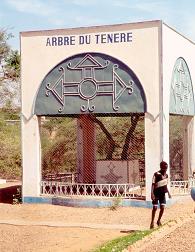 1973, a drunk truck driver managed to hit the only obstacle in 250 miles…the L’Arbre du Ténéré tree. How could someone…even a drunk driver manage to hit a tree, with miles of open desert all around it? It boggles the mind.
1973, a drunk truck driver managed to hit the only obstacle in 250 miles…the L’Arbre du Ténéré tree. How could someone…even a drunk driver manage to hit a tree, with miles of open desert all around it? It boggles the mind.
The Tenere region was not always a desert. As sun seasons change things all over the Earth, it went from sea floor to rainforest to desert over the centuries. Still, through it all one little tree stood strong. Finally, the Ténéré region became inhospitable with little vegetation and an average annual rainfall of only 2.5 centimeters. After a time, water was even scarce underground. By the early 20th century, all that remained was a small group of the thorned, yellow-flowered Acacias of the Ténéré. Finally, all but one died, leaving it as the only surviving tree in a 250 mile radius…which made its destruction even more tragic. After the tree was struck down, the dead tree was moved to the Niger National Museum. That is all that remains of the once great forest of Acacia trees in that region.
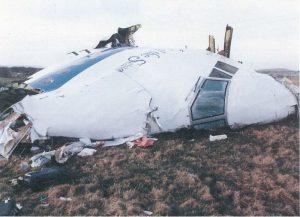 On December 21, 1988, at 7:00pm, Pan Am Flight 103 from London to New York exploded in midair over Lockerbie, Scotland, killing all 243 passengers and 16 crew members aboard, as well as 11 Lockerbie residents on the ground. A bomb hidden inside an audio cassette player detonated in the cargo area when the plane was at an altitude of 31,000 feet. The disaster, which became the subject of Britain’s largest criminal investigation, was believed to be an attack against the United States, because although the passengers came from 21 countries, the majority, 189 of the 259 victims on the plane were American. Islamic terrorists were accused of planting the bomb on the plane while it was at the airport in Frankfurt, Germany. The investigation lasted for years, 15,000 people were interviewed and 180,000 pieces of evidence were examined. Finally, in 2001, Mohmed al-Megrahi was convicted and sentenced to 20…and later 27 years in prison. Lamin Khalifa Fhimah was acquitted, and the Libyan government eventually agreed to pay damages to the families of the victims.
On December 21, 1988, at 7:00pm, Pan Am Flight 103 from London to New York exploded in midair over Lockerbie, Scotland, killing all 243 passengers and 16 crew members aboard, as well as 11 Lockerbie residents on the ground. A bomb hidden inside an audio cassette player detonated in the cargo area when the plane was at an altitude of 31,000 feet. The disaster, which became the subject of Britain’s largest criminal investigation, was believed to be an attack against the United States, because although the passengers came from 21 countries, the majority, 189 of the 259 victims on the plane were American. Islamic terrorists were accused of planting the bomb on the plane while it was at the airport in Frankfurt, Germany. The investigation lasted for years, 15,000 people were interviewed and 180,000 pieces of evidence were examined. Finally, in 2001, Mohmed al-Megrahi was convicted and sentenced to 20…and later 27 years in prison. Lamin Khalifa Fhimah was acquitted, and the Libyan government eventually agreed to pay damages to the families of the victims.
The lateness of the explosion made much of the recovery impossible until the stark light of day, when the horror really became clear to the world. The reasons for the attack, in the minds of Islamic terrorists were to destroy life as much as possible, and I’m sure they thought they had succeeded. Yes, the people who died and their family, will never get over their loss. It just doesn’t work that way. It never goes away, but out of that tragedy, came something amazing too…the Lockerbie Heroes.
Lockerbie is a small town in Scotland, and something like this attack is unheard of. Such things seemed so far  away, but as we all know, such things can come to small towns, and it is then that these little hamlets take center stage…sometimes for a short time, sometimes for years, and sometimes its forever. This small town took it upon themselves, to make a difference. Most of us would run away from the horror, or hide so we didn’t have to face it, but not the citizens of Lockerbie. Every member of this town turned out, and with no specific plan in place, they simply started to help. On that December day in 1988, a Pan Am flight had blown up, and hundreds of pieces of metal, random, objects, and body parts come raining out of the sky.
away, but as we all know, such things can come to small towns, and it is then that these little hamlets take center stage…sometimes for a short time, sometimes for years, and sometimes its forever. This small town took it upon themselves, to make a difference. Most of us would run away from the horror, or hide so we didn’t have to face it, but not the citizens of Lockerbie. Every member of this town turned out, and with no specific plan in place, they simply started to help. On that December day in 1988, a Pan Am flight had blown up, and hundreds of pieces of metal, random, objects, and body parts come raining out of the sky.
Most of us assume that we would go into state of panic, but the people of Lockerbie didn’t have time to panic. They were too busy diving into the wreckage to collect any personal items they might find. No, not to keep them or sell them on eBay, it was the 80’s after all. They did it simply to comfort the victim’s families. In order to store the tens of thousands of debris pieces that had been scattered over 845 square miles, the first thing the townspeople did was build a warehouse. Any items that weren’t of forensic value were left for the townspeople to organize. These The compassionate people of Lockerbie knew that they couldn’t hand them to the bereaved families looking so ugly. The reality was that seeing these items in the condition they were now, would be pure torture. The townspeople decided to perform an act of love and compassion. Working as a gigantic assembly line of washers and dryers and ironers and folders, the townspeople restored the countless items of clothing scattered across the charred, muddy, usually quite apocalyptic landscape. They developed rolls and film and put diaries back together to identify the owners, while any stray rings, wallets, and other effects were carefully matched up to the corresponding suitcase. In one instance, the State Department informed one family that they couldn’t have their daughter’s stuff back because it was “too badly damaged.” The people of Lockerbie scoffed at that and un-damaged it. What a gift. You can’t help but cry and the enormity  of their kindness.
of their kindness.
Before long, the relatives flocked to Lockerbie in order to be near to the site of the crash. The town opened its doors and took them in, setting the foundation for friendships that still survive today. Christmas cards are exchanged, letters are written, and families still journey to the town. It takes a lot of awesome to turn a town from “giant crater where my loved one died” to “place of friendship and comfort.” As the years have passed, the people coming aren’t as many, but the town of Lockerbie and the world remember each and every victim.

